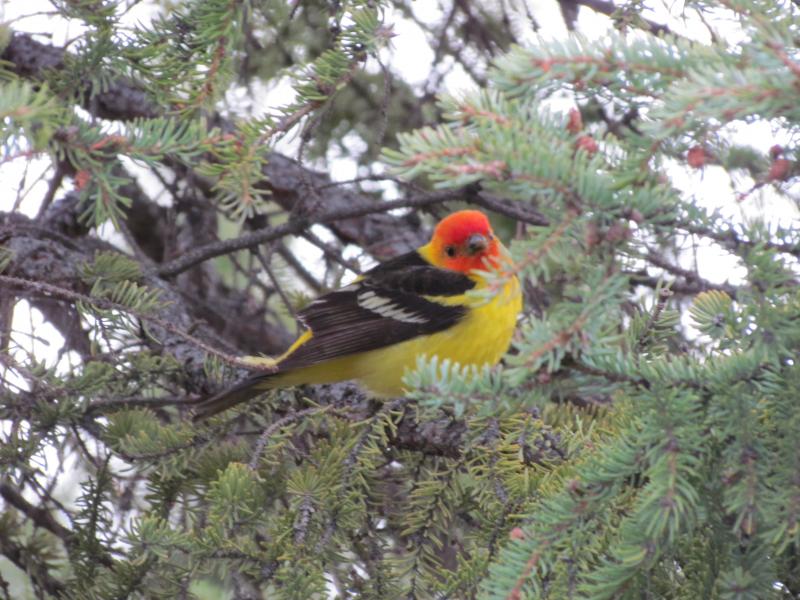Last week we did a flying run down to Saco to “chase” a rare bird that we have never seen in Maine, a western tanager. That’s a bird that should be in Mexico or Central America this time of year. We knew about the bird and its whereabouts because its daily occurrence was being reported via the Maine birds listserve. When we arrived at the site where it had been seen, we found four other birders, from the Waterville area, already there and searching. Sadly, we did not see the bird in the rather short time we had available to look for it but when we left, the other birders promised to call us immediately on our cell phone if they found it again (they didn’t).
When we began birding back in the late 1970’s, there were no listserves or cell phones. News of rare birds might be shared with some local friends over the telephone and, if rare enough, word might eventually spread to the few rarity chasers from outside of the local community. Often, though, the first many people might hear of an unusual bird could be weeks or months after it had been seen and long departed. Some local Audubon chapters and birding groups eventually formed phone trees in which each person was responsible for contacting the next person on the list to tell them about a bird.
We remember how excited we were when we discovered the modern technological innovation of the prerecorded “rare bird alert.” That was a phone number that you could call and listen to a recorded message on an answering machine. Ideally a new message was recorded each week that described the unusual birds that had been seen around the state and where to find them. Of course, it was difficult to provide detailed directions to locations on the recordings, and since they were generally updated once a week, you could easily miss an unusual bird that was present for only a day or two by the time you found out about it on the rare bird alert. Still, we remember getting permission from Mom and Dad to call the long distance number and hope that the rare bird alert had been updated. Oh, the disappointment when it was the same message from the previous last week—and what anticipation, waiting for another chance to call the next day. For the person who recorded the message it was a lot of work, as even finding out about rare birds around the state basically meant calling each of 8-10 birders who kept tabs of the birds in their particular region. Then the bird alert compiler would have to write down the details of the reports that were worth sharing. Finally, all that information had to be weaved together into an audio report that could be recorded. If the compiler made a mistake while recording, they had to erase and do it all over again until they got it right!
Email changed some of that, but in the early days those tied into it were primarily only people connected with universities that had email. As more birders did become emailers, information could be shared that way instead of by phone. We still remember the revelation of the first crude type of birding listserve, established when we were graduate students at Cornell University. A computer-literate birder friend of our who worked at the Cornell Lab of Ornithology began sharing bird reports in bulk emails to anyone who wanted to be included; within a few years, the new technology of a listserve was developed and adopted there in our Upstate New York Cayuga Lake Basin birding community. It was a revolution in birding, and we hardly realized it at that time.
Now a birder can find out in seconds when someone has spotted a bird and get detailed directions and maps to the location. Reports are often accompanied by photos and videos perhaps taken just minutes earlier.
Which all ties back to how we ended up making a flying run down to Saco…
































